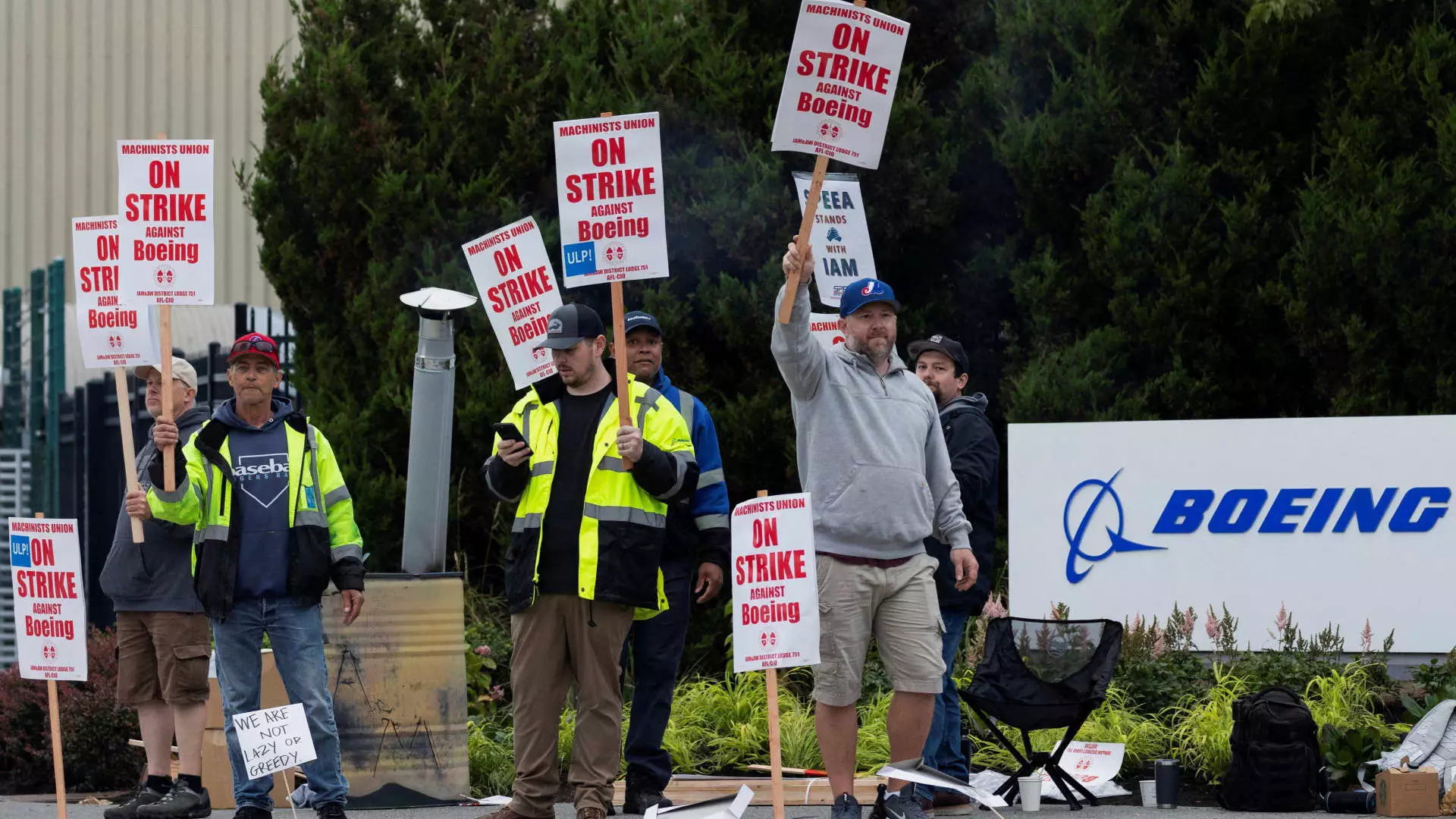In Renton, Washington, cradled in the shadow of its own manufacturing plants, Boeing is grappling with escalating tensions between the company and its employees. The ongoing machinist strike, which has now entered its second week, has revealed the broader economic pressures felt by workers as they push for better wages amid soaring living costs in the Seattle area. Hidden behind the facade of one of the most successful aircraft manufacturers, Boeing faces a complicated web of economic and operational challenges that could have far-reaching consequences.
With over 30,000 machinists participating in this strike, the primary issue centers around compensatory adjustments amid a staggering rise in living expenses. Union workers, disheartened by the cost of housing—with the median price soaring over 140% in the last decade—are sensing an urgency to remedy their financial predicaments. These workers are not just fighting for salaries; they’re insisting on business practices that recognize their value while acknowledging the larger economic context. In conversations shared with reporters, many machinists recount their personal sacrifices: cutting eating out, forgoing vacations, and taking on side jobs such as furniture moving and food delivery—activities reflective of their determination and dedication to their craft.
Furthermore, workers express their pride in contributing to Boeing’s legacy. Yet, this sentiment is overshadowed by deep concerns regarding their economic futures. The struggle they face is emblematic of a larger issue within the labor market and reflects the unique stresses associated with skilled labor in an evolving economic landscape.
Boeing’s financial stability is at a precarious juncture. With approximately $60 billion in debt, the company has already been under scrutiny from ratings agencies, warning that a prolonged strike could exacerbate its financial situation significantly. This year alone has seen Boeing hemorrhage around $8 billion, largely as a consequence of operational missteps and production challenges linked to earlier model issues, including those related to the 737 Max. Simply put, every day the strike continues costs Boeing an estimated $50 million.
The context of these losses is further complicated by the growing competition for talent in the aerospace industry. Amid a tight labor market and a history of layoffs during the pandemic, Boeing’s strategy revolves around retention and attraction of skilled labor. Virtually every decision made in the boardroom must now weigh the potential human cost of conflicts like this strike against financial needs and production capabilities.
Negotiations between Boeing and the International Association of Machinists and Aerospace Workers have been characterized by disappointment and an apparent lack of progression. The machinists recently rejected Boeing’s offer of a 25% wage increase over four years, pushing for a more substantial raise of around 40%. Their voices reflect the hope for additional benefits such as annual bonuses, and the restoration of pensions that have long been abandoned.
For the union, securing a deal is not just about immediate gains; it’s about laying a foundation for a more equitable relationship in the long term. As other sectors, from actors to autoworkers, have successfully fought for better conditions, the pressure is mounting on Boeing to adapt to this changing labor landscape, which also sees increased demands for corporate responsibility and healthy working conditions.
The current strike underscores the growing collective action across various industries in the United States, which has seen waves of labor activism rising against the backdrop of economic disparities exacerbated by the pandemic. The lingering effects of these labor disputes offer important lessons for executives and policymakers alike, revealing the precarious balance between maintaining profitability and ensuring fair treatment for employees.
As Transportation Secretary Pete Buttigieg has emphasized, a resolution that respects workers while enabling Boeing to navigate its financial adversities is critical not only for the company’s immediate future but also for the overall health of the aerospace sector. The relationship between employers and employees must evolve to ensure mutual sustainability.
In sum, the ongoing tensions at Boeing serve as an indicator of broader labor market dynamics and economic realities that resonate nationwide. As the strike continues, both sides must navigate a complex web of interests and demands. The path forward will not only define the future of Boeing but will also set important precedents in labor relations, shaping how corporations approach their workforce in a rapidly changing economy. The potential ramifications of this conflict extend far beyond the Pacific Northwest—impacting labor markets, corporate strategies, and economic policies at large, making it a pivotal moment in the current saga of American labor relations.

